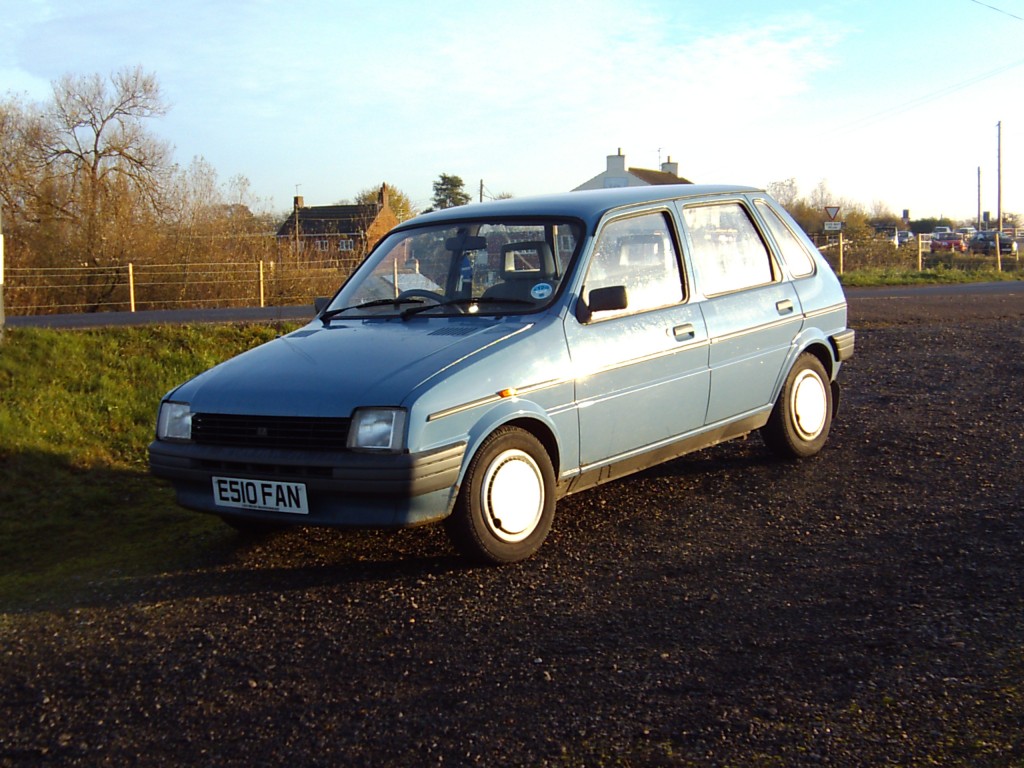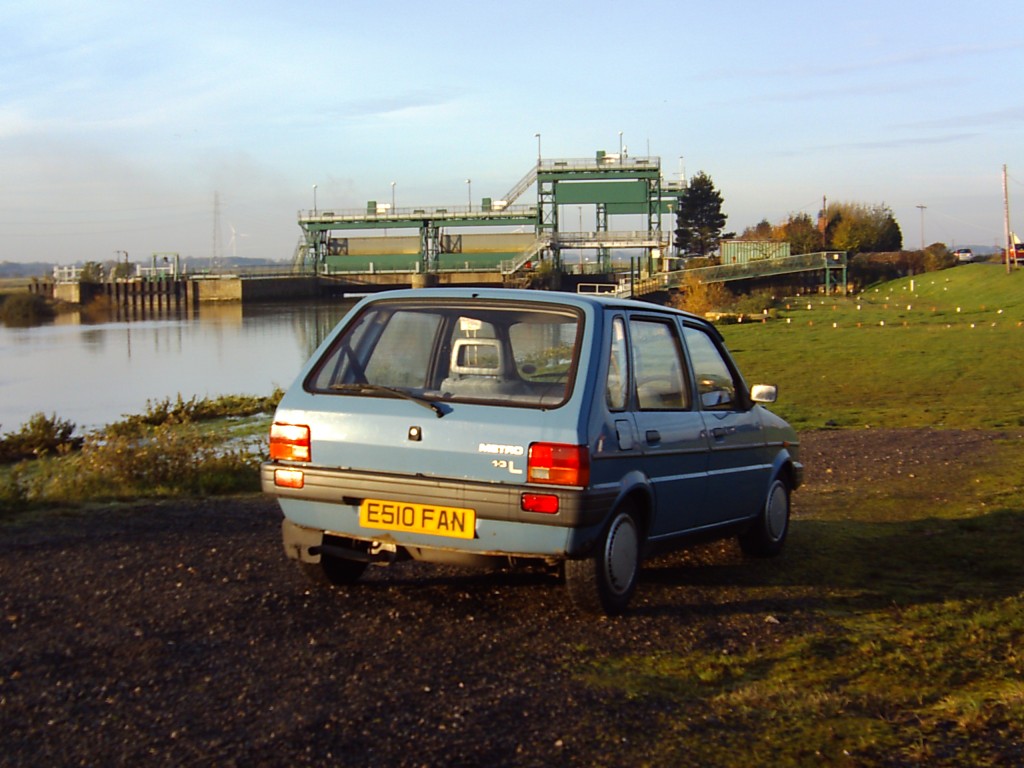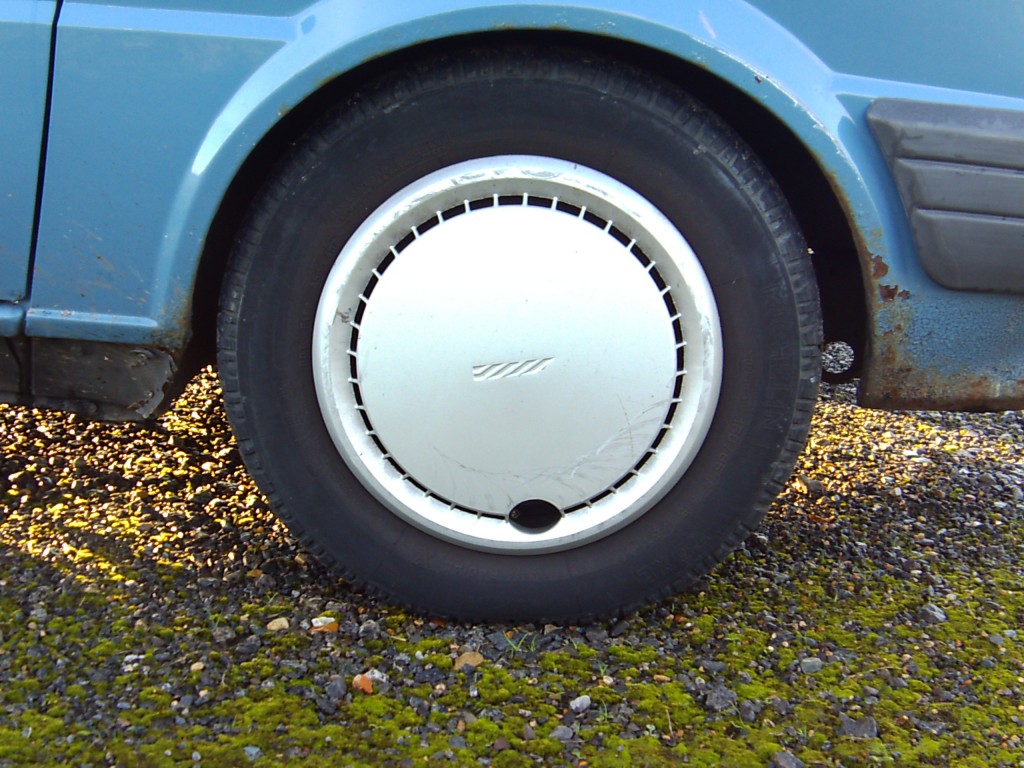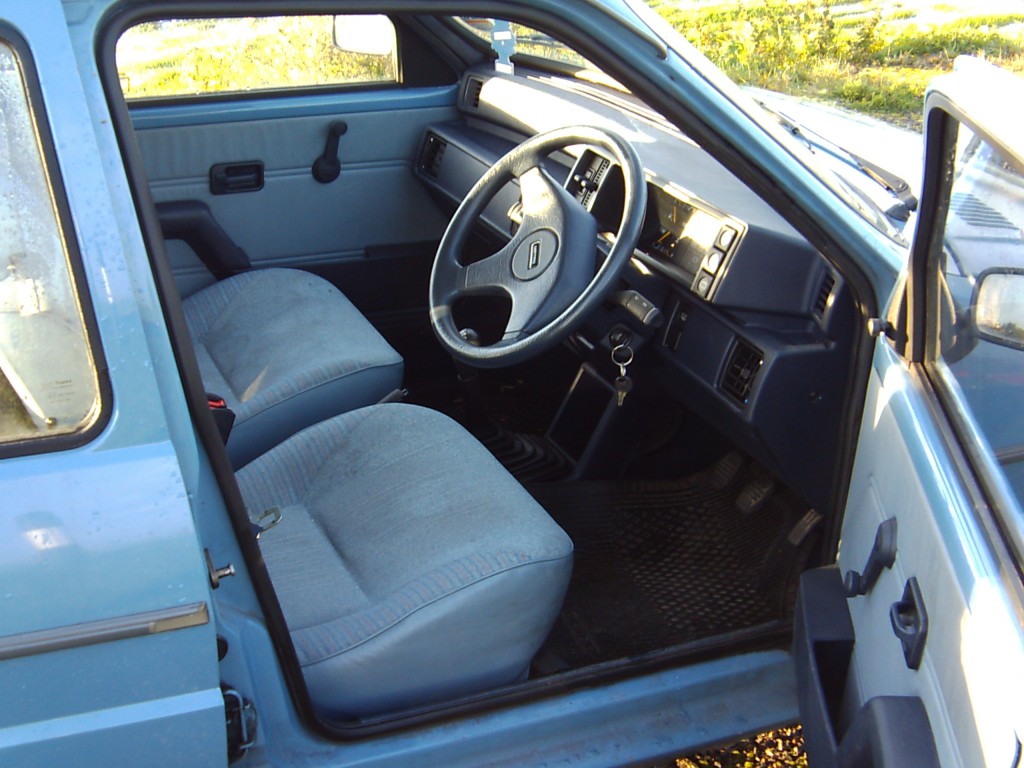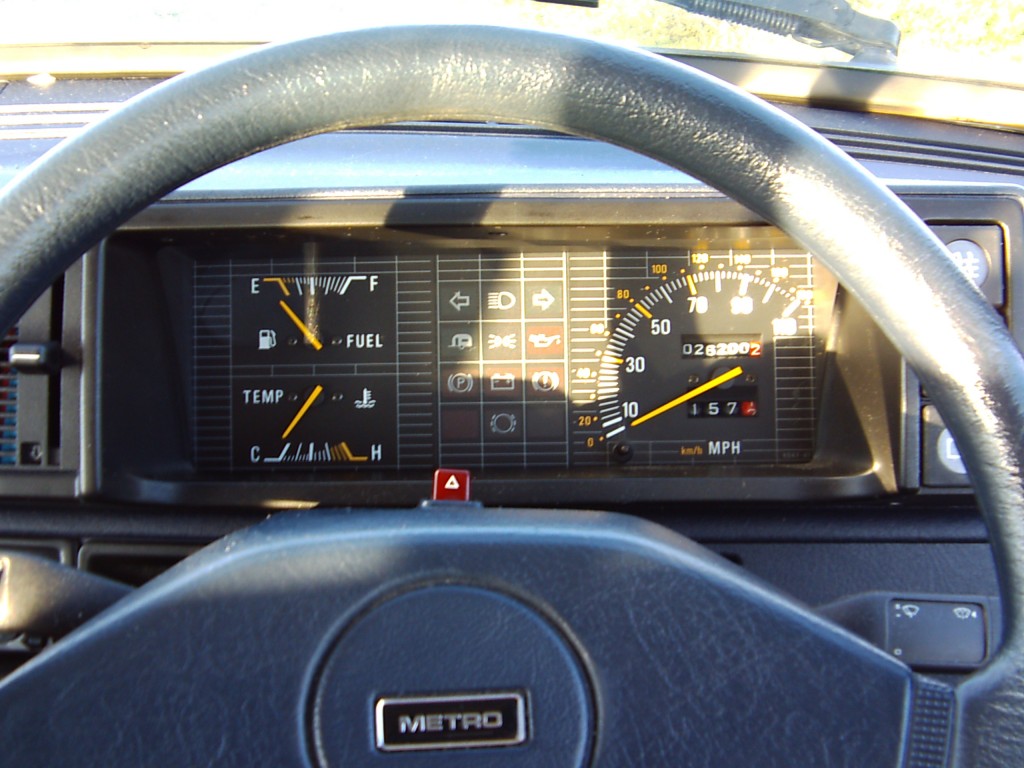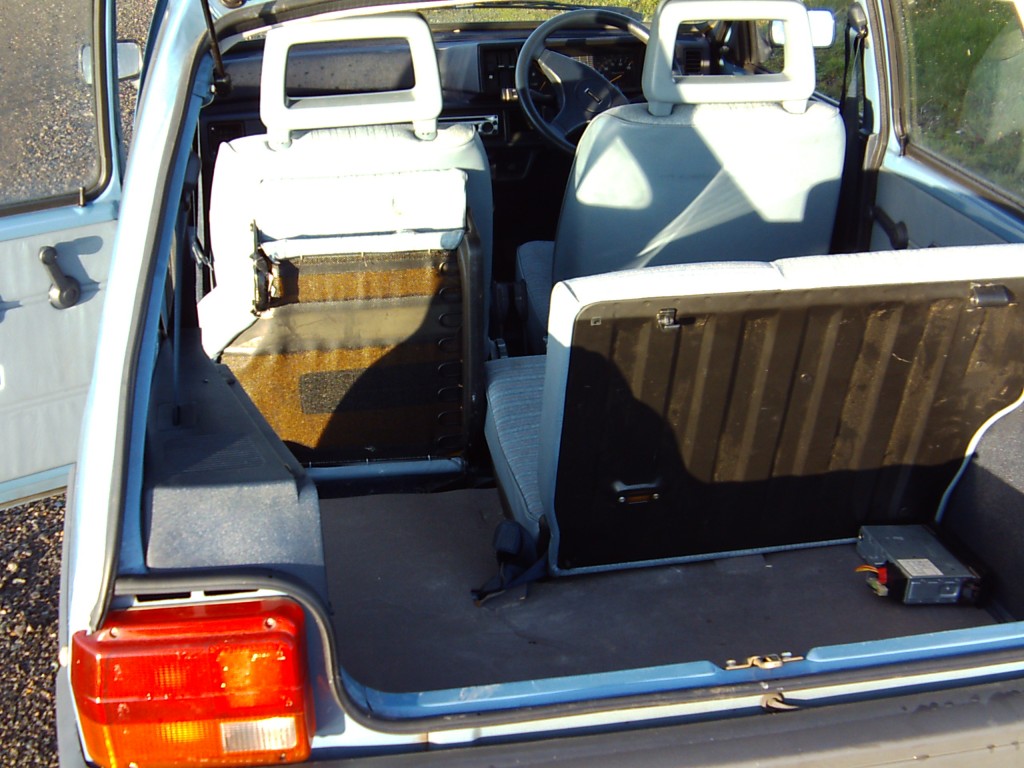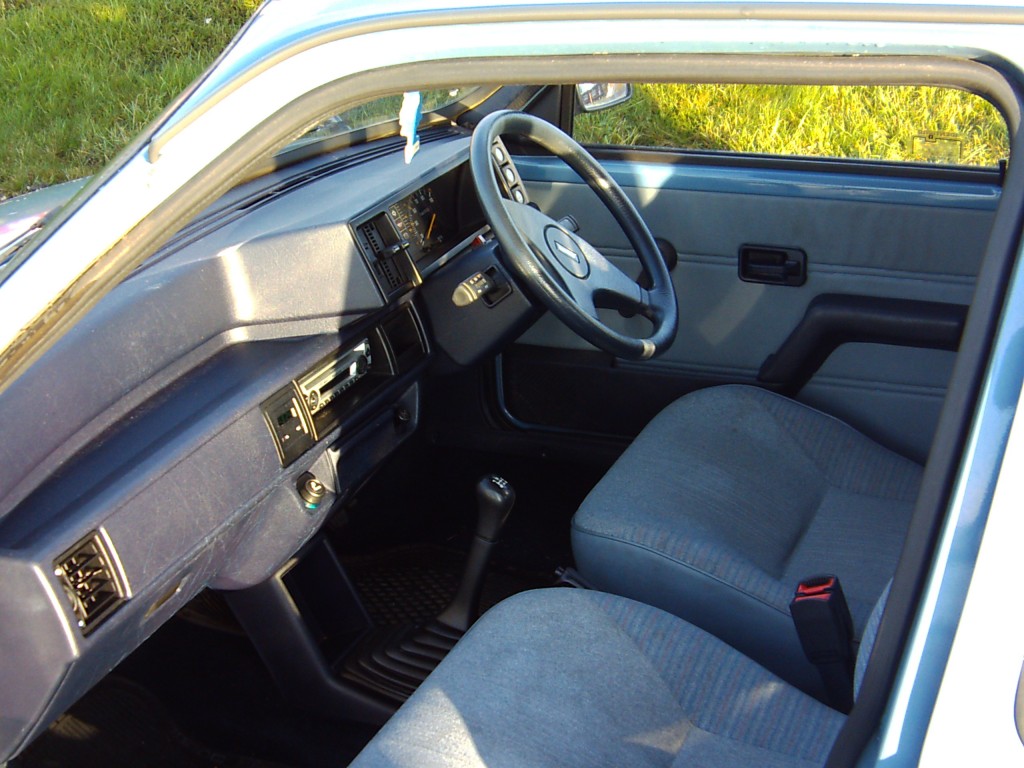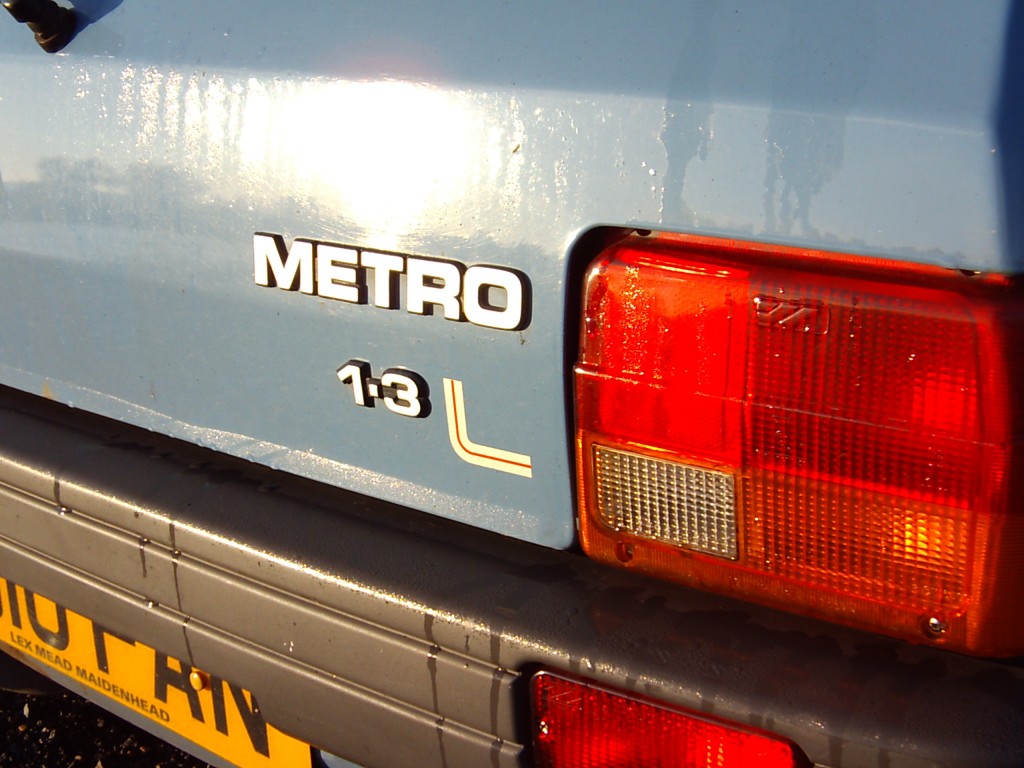As detailed in last weekend’s Trip Report I am now the owner of a very low-mileage 1987 Metro 5-door. Aside from it’s numerous good qualities which should be obvious (if they’re not, they should be by the end of this post) I bought it because I could no longer live with the hypocrisy of continually banging on about the supposed not-as-rubbish-as-people-say-ness of British Leyland cars without ever having actually owned one.
It could be argued that I’m still not doing it properly because I’ve bought what is, without much doubt, the best car BL ever made, and that’s not damning it with faint praise, either. The Metro was certainly its best-seller and gave the ailing conglomerate a crucial shot in the arm that allowed it to stagger on through the ‘Eighties and eventually get itself in some sort of order as the Rover Group.
The Metro’s image as suffered as little as the stereotypical chariot of driving schools and the elderly, plus its more real rust issues. However this has never dented its reputation to the extent of some of its Leyland stablemates because, like the Mini (also not without its own design issues and propensity to rust) the product was so fundamentally right. The Metro was the first car BL made that needed no apology or explanation. It was competitive from the get go and was, in its own way, an innovator. All this is quite remarkable given that it was design, and re-designed, and re-re-designed, on a shoe-string budget based around the underpinnings of the Mini, which was 22 years old by the time the miniMetro (as it was originally called) was launched.
Outside
The Metro’s angular styling is very much of its time, whilst the slight wedge shape to the bonnet and the front end betrays the hand of Harris Mann. For a car that was, literally, styled by a comittee (ex-Rover stylist and full time mobile hair sculpture David Bache was the other main contributor) it’s a remarkably cohesive design. The ghost of Issigonis was lurking over Cowley long after he had quite the company. Forced to use the same basic structural principles as the Mini the stylists were also forced to use the same proportions and ‘hard points’ that Issigonis had set down back in the ‘Fifties, which gives the Metro the same very tight styling of the BMC-era products, with no excess metal on it. Given that it’s amazing how contemporary the Metro’s styling is- compare it to a VW Polo, or Renault 5 of a similar age and it blends in well.
This car is a facelifted example which introduced the 5-door layout and tidied up the front end styling a little, getting rid of the inset headlamps and rather slab-like front end. Considering that a 5-door version was never included in the original design and styling specifications it blends into the original shape very well. By the mid-1980s BL had finally managed to get some sort of comprehensive ‘house style’ going and the Metro shares its major cues with the Maestro and Montego.
The other thing of note is that, especially in comparison to modern cars, the area of glass is huge. Of course this is ideal for the Metro’s intended environment (the city, as if the name didn’t give it away). The hatchback bootlid particularly dominates the rear aspect, with the rear lights and the panelwork looking almost like afterthoughts. Maybe this was intentional, as the hatchback was the headlining new feature of the car?
Finally, it’s worth noting that the Metro carries no marque badging. Since BL had ceased to exist by the time this particular one was built it was built under the Rover Group banner. This meant that, despite the plethora of Austin-Rover chevrons on all sorts of components (not to mention the hubcaps) this isn’t an Austin Metro. It’s just a ‘Metro’.
Inside
Space…the final frontier. It’s the sheer amount of space that makes an impression when you get into the Metro. It proves that, despite the guidance of Sir Alec, BL had lost none of their skill at packaging. If anything the Metro is in many ways superior to the Mini, since it has a much less cramped driving position, a wider cabin and seating for five, rather than four, people in a car of roughly the same size, whilst having a much less spartan interior. Close inspection shows where some of the space has come from- the Metro lacks the Mini’s huge storage bins at each corner and has rather mean ‘slots’ rather than proper door pockets. But how many Mini owners actually needed to carry a dozen bottles of Gordon’s gin in their car at once, anyway? Instead the Metro’s sliding seats and boxy body mean that I, at 6′ 2″ can comfortably ‘sit behind myself’ with headroom to spare. Something that could never happen in a Mini.
The Metro’s facelift included a major tweak to the interior. The early Metro had a very Mini-esque ‘bare essentials’ dashboard with a very ‘Seventies instrument cluster. To bring the Metro into line with the rest of the Austin lineup the interior was revamped to include a proper fascia with the same styling (and most of the same switchgear) as the other M-cars. This included the defining feature of all ‘Eighties A-R cars, the dashpod with the speedo on the right and the fuel and temperature gauges on the left, with the big ‘chess board’ of warning lights in the middle. With a seemingly endless variety of background graphics, needle colours and numeral fonts the same cluster was used on all the non-luxury products of the Rover Group and endured on the Sherpa-based LDV vans right up to 2006. On this Metro the background is a strange ‘graph paper’ pattern which could only ever be found on a car from the ‘Eighties.
Where the Metro carried on its Mini heritage is in the ergonomics, or the lack of them. The switchgear is scattered around the dashboard and none of it is easy to reach. The heater controls sit up next to the instrument cluster and are obscured from sight by the left-hand part of the steering wheel. Other switches for the rear wash/wipe and foglight are obscured by the right-hand part. A few other minor switches are down by the driver’s right knee whilst the radio is almost perfectly positioned to be blocked from view by the driver’s left arm when in a normal driving position.
Manufacturers talk a lot of ‘surprise and delight’ features in modern interior design. The Metro was designed long before this sort of thing but it does have a few neat touches, but coming from a Land Rover and a 2CV almost any form of interior design is a surprise and a delight. I particularly like the heater fan switch, the symbol for which is backlit green at night in keeping with all rest of the dash. If you switch the fan to its ‘Slow’ setting the backlighting turns dim orange. Flick it onto ‘Fast’ and it glows a brighter orange. I don’t know why this impresses me so much. I think it’s because it’s so, well, un-British-Leyland.
The whole interior is made from plastic and rubber in various shades of blue, to match the exterior. Colour-coding to this extent is something rarely seen in today’s cars with their Germanic ‘premium’ obsession with black soft-touch plastics and when carried out on such an inoffensive colour as slightly dusty blue it works well. Austin-Rover dashboard plastics are infamous for not dealing well with sunlight (an unfortunate quality for a material that will spend around half its time in under such conditions). Even this low-mileage car shows the early signs of the dash-top warping.
The hatchback rear end means the Metro’s boot is not only much larger than a Mini but easier to access. In fact the boot is a decent size by modern supermini standards and the car’s part piece (60/40-split folding rear seats) means it can be made even more commodious if needed. As I mentioned in my collection report, you can get some seriously large and awkward loads in the back.
Under Way
The Metro is started up with a very early example of the soon-to-be-widespread Rover Bendy Key. The 1275cc A+ Series motor fires up quickly on half-choke, even on a cold East Anglian morning with frost on the ground. The Metro has sound deadening on the bulkhead and a fair amount of footwell padding so the sound is quite subdued. None the less the classic A Series combination of a smooth chorus of ticking from the top end and a slight rasp to the exhaust note is still there. It feels and sound like any other ‘Eighties hatchback, a testement to the work done to develop the A+ and the inherent ‘rightness’ of the original engine despite its origins back in the post-war days.
The Metro gets a lot of criticism for retaining the Mini’s odd upright driving position. I don’t actually see the similarity myself- the deeper dashboard and different angle of the steering wheel make the Metro much more conventional. What I can, and will, criticse, is the footwell design. Not only is it on the cramped side for anyone with two feet but I think they must have had the guys at Triumph design the pedals, because they are hugely off centre. In fact the steering wheel doesn’t line up with the centre of the instrument cluster and the pedals don’t line up with the steering column which doesn’t really line up with the seat. The upshot is that the first couple of times I drove the Metro I kept stamping on the brake instead of the clutch. The throttle pedal travel is restricted by the outer edge of the footwell, too, meaning you have to change your foot position to access the furthest reaches of the travel. The flawed footwell is my biggest gripe about the Metro, by a long way.
The long plastic gearlever and its rubber bellows gaiter is would be familar to any Mini driver and the 4-speed gearbox it’s attached to is the same. With only 26,000 miles under its cogs the linkage is still fresh and it has the positive, pleasingly mechanical action that contributes so much the driving experience of an A Series-powered car.
The self-adjusting clutch is light with just the right amount of feel, but letting out shows the take-up of drive to me quite sharp. The A Series engine does what they do best, pulling smoothly away without excessive revving and setting of down the road with a pleasant, smooth burble. For all its modern looks and fettling the Metro still produces one of the most evocative sounds of British motoring- the milk-float whine of a small box-in-sump in first gear. I wouldn’t have it any other way, especially since in the other gears the box is whisper quiet. The synchromesh works smoothly although the downchanges feel a little ‘rubbery’.It’s not a gearbox that you can really work quickly, but then neither is the car.
By 1987 Longbridge were getting the hang of screwing the Metro together. This one is eerily free of squeaks and rattles from the dashboard and trim, apart from an irritating drumming caused by the parcel shelf, which has a broken mounting lug.
Performance
The 1.3 A+ motor produces 63 horsepower. The Metro 5-door weighs just under 750kg. Those figures sound quite promising but I’ll say this now, this car doesn’t feel like it has that much power and that little weight. Of course a lot of this is down the nature of the engine. Even in ‘Plus’ form the stock A Series isn’t an engine that likes to rev. I think the engine is this particular one, which is both low-mileage and has spent those few miles bumbling around the M4 corridor, is still quite tight, too. It will rev but doesn’t feel happy at being provoked. In First gear it has plenty of ‘zip’ for getting onto roundabouts or out of junctions but in the mid-range it’s better to pop into Third and let the torque do the work. If it’s not nippy the engine is certainly gutsy. It seems to have an almost completely flat torque curve. You can slip into top gear at a shade under 30 MPH and the engine will happily knuckle down and keep accelerating. It accelerates in the same fashion at 60 MPH on the motorway as it does around town. Once you realise that a mid-range Metro is never going to pin you back in the seat with its acceleration you just adapt and enjoy the fact that the car is very easy and predictable to drive.
The car has enough poke to mix it with motorway traffic and isn’t going to get into trouble on a sliproad. 60 MPH would seem to be the sweet spot of making progress without feeling as if you’re starting to stretch the engine beyond it’s comfort zone, but even at 70 it has performance in hand. Motorway inclines just require a firmer squeeze on the throttle to maintain speed and it’s even possible to make the odd excursion into the fast lane if needed. The noise levels are much, much lower than on a Mini, even one from the same time period as the Metro. There’s no transmission howl and the engine is just a steady drone from the other side of the bulkhead. In fact the most intrusive aspect is the wind noise, probably a sign of less-than-perfect door seal design.
Ride and Handling
Surprisingly for a car designed expressly to be a cheap urban shopping trolley this is the area that the Metro really shines. Of course this is just its Mini ancestry shining through- that car was also never intended to be such an engaging and sharp-handling car as it was, it was just a pleasing side effect.
The Metro has the (in)famous Hydragas suspension. To save development costs BL chose not to fit the system properly and omitted the fore/aft interconnection. This was somewhat missing the point because it was this that gave Hydragas cars such as the Princess and the later Maxis their class-leading ride comfort. As it is the Metro simply has a fluid/gas sphere on each corner which acts the spring and the damper.
The result is that the ride comfort is a huge improvement on a rubber-cone Mini, especially an ‘Eighties-built one on the wider, lower-profile tyres, but is hugely below the standard of other Hydragas cars. It doesn’t exhibit the same jarring and jiggling as a Mini. What it does is absorb the shock of most road defects and bumps very well, as you’d expect from gas springs. Around town at typical around town speeds the spheres are excellent at soaking up drain covers, cats-eyes, lumpy patches of tarmac and even speed bumps when taken at a suitable pace- but not the sort of pace you can go over in a 2CV, as I rapidly learnt from experience.
The Hydragas combination of soft springs, short travel and fully independent suspension (not to mention the car’s wide track for its size) means that the Metro generally feels planted and grippy. On the straight, flat but seriously uneven Fenland roads (a real test for any suspension) the system is in its element, absorbing the undulations and getting into something approaching the comfortable, lolloping, bouncing motion of its full-Hydragas stablemates.
What upsets the car is any road surface that is rough or genuinely bumpy, rather than smoothly undulating, when taken at a decent clip. Here the short wheelbase and the lack of interconnection means that the car begins to be affected by uncontrolled pitch, becoming quite skittish and beginning to feel as if its losing its composure.
If the suspension has its flaws, the steering certainly does not. BL clearly knew that there was nothing wrong with the Mini’s rack-and-pinion setup as it was and left it well alone. The Metro has the same wonderfully direct and weighted steering as its forebear. The ‘giant go kart’ feeling is alive and well and the grippy suspension encourages you to chuck the car about a little. This goes a long way to compensating for the engine’s relative lack of ‘pep’ as you can maintain speed and smooth progress round all but the sharpest corners. Despite being non-assisted the steering is still light at low speeds without being over-light once on the move. It all makes for an immensely engaging and enjoyable driving experience without detracting from the Metro’s ability to just be a normal supermini when you don’t feel like having fun.
Conclusion
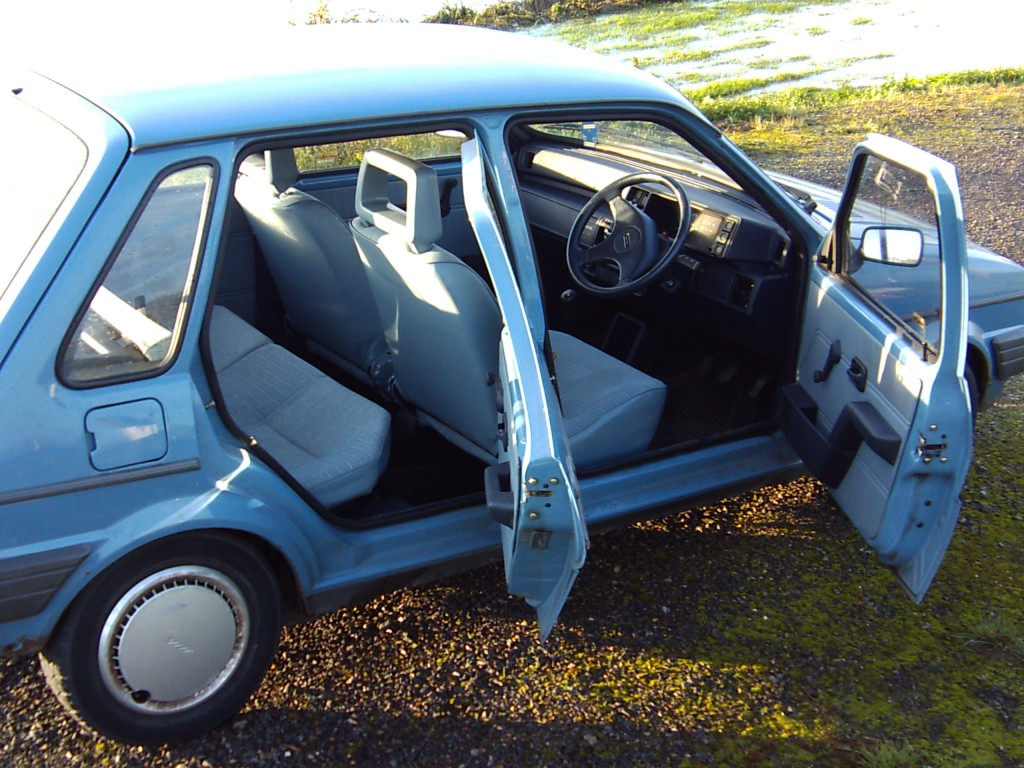 ‘A British Car To Beat The World’ was the rather uncomfortably jingoistic slogan that launched the Metro on the world. It was never going to be a world-beater or a trend-setter like the Mini, the car it was meant to replace, was. Times had moved on and the Metro’s job was much tougher- to compete against increasingly savvy rivals who were starting to encroach on the previously BL-only ground of transverse-engined spacious little cars. The Metro didn’t rewrite the rules, but it did play by them to dazzling effect. What it was was a genuinelly competent, practical and enjoyable little car that stood on its own merits.The sales figures showed how right the design was.
‘A British Car To Beat The World’ was the rather uncomfortably jingoistic slogan that launched the Metro on the world. It was never going to be a world-beater or a trend-setter like the Mini, the car it was meant to replace, was. Times had moved on and the Metro’s job was much tougher- to compete against increasingly savvy rivals who were starting to encroach on the previously BL-only ground of transverse-engined spacious little cars. The Metro didn’t rewrite the rules, but it did play by them to dazzling effect. What it was was a genuinelly competent, practical and enjoyable little car that stood on its own merits.The sales figures showed how right the design was.
‘Easy’ is the word that kept cropping up in my mind when thinking about this test. The Metro is a very easy car to drive. It’s also very easy to live with and very easy to enjoy yourself in. I can see why they were so popular.
